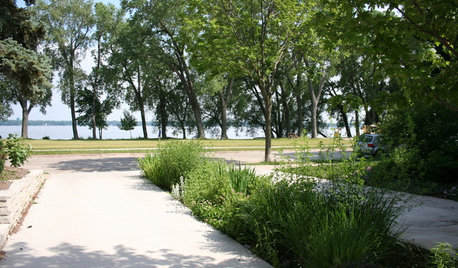Above Ground Freeze Protection
davey4000
17 years ago
Related Stories

GREEN BUILDINGThe Big Freeze: Inventors Break New Ground to Keep Things Cool
Old-fashioned fridges can be energy guzzlers, but there are more eco-friendly ways of keeping food fresh, as these global innovations show
Full Story
HOUSEKEEPINGProtect Your House From Winter Water Damage
Avoid costly repairs by learning to spot potential problem areas before water damage is done
Full Story
REMODELING GUIDES5 Ways to Protect Yourself When Buying a Fixer-Upper
Hidden hazards can derail your dream of scoring a great deal. Before you plunk down any cash, sit down with this
Full Story
GROUND COVERSGround Force: 10 Top Ground Covers for Your Garden
Protect your soil from weeds and drought this summer with a living mulch of ground covers
Full Story
GARDENING GUIDESProtect a Precious Resource With a Rain Garden
Promote pure water and a beautiful landscape with a garden design that makes the most of the rain
Full Story
FENCES AND GATESA Deer Fence Can Be Decorative as Well as Protective
You need a monster-size fence to shelter your garden from deer, but it doesn’t have to look like a monstrosity
Full Story
REMODELING GUIDESHow to Protect (Even Enhance!) Your Relationship While Renovating
No home improvement project is worth a broken heart. Keep your togetherness during a remodel with this wise advice
Full Story
ARCHITECTUREStilt Houses: 10 Reasons to Get Your House Off the Ground
Here are 10 homes that raise the stakes, plus advice on when you might want to do the same
Full Story
LANDSCAPE DESIGNHow to Design Your Landscape to Sink Water Into the Ground
Learn to infiltrate stormwater, even on challenging sites
Full Story
ARCHITECTURE15 Intriguing Homes Perched Above the Earth
Set on stilts, propped on pilotis or cantilevered into the air, these residences rise to the occasion
Full Story








lazypup
davey4000Original Author
Related Professionals
Franklin Plumbers · Vienna Handyman · Artondale Kitchen & Bathroom Remodelers · Alpine Kitchen & Bathroom Remodelers · Brentwood Kitchen & Bathroom Remodelers · Chester Kitchen & Bathroom Remodelers · Durham Kitchen & Bathroom Remodelers · Ewa Beach Kitchen & Bathroom Remodelers · Fort Washington Kitchen & Bathroom Remodelers · Oxon Hill Kitchen & Bathroom Remodelers · Saint Augustine Kitchen & Bathroom Remodelers · South Plainfield Kitchen & Bathroom Remodelers · Thonotosassa Kitchen & Bathroom Remodelers · Middlesex Kitchen & Bathroom Remodelers · Joppatowne Kitchen & Bathroom Remodelerspinocchio
lazypup
davey4000Original Author
pinocchio
Pooh Bear
lazypup
pinocchio
Pooh Bear